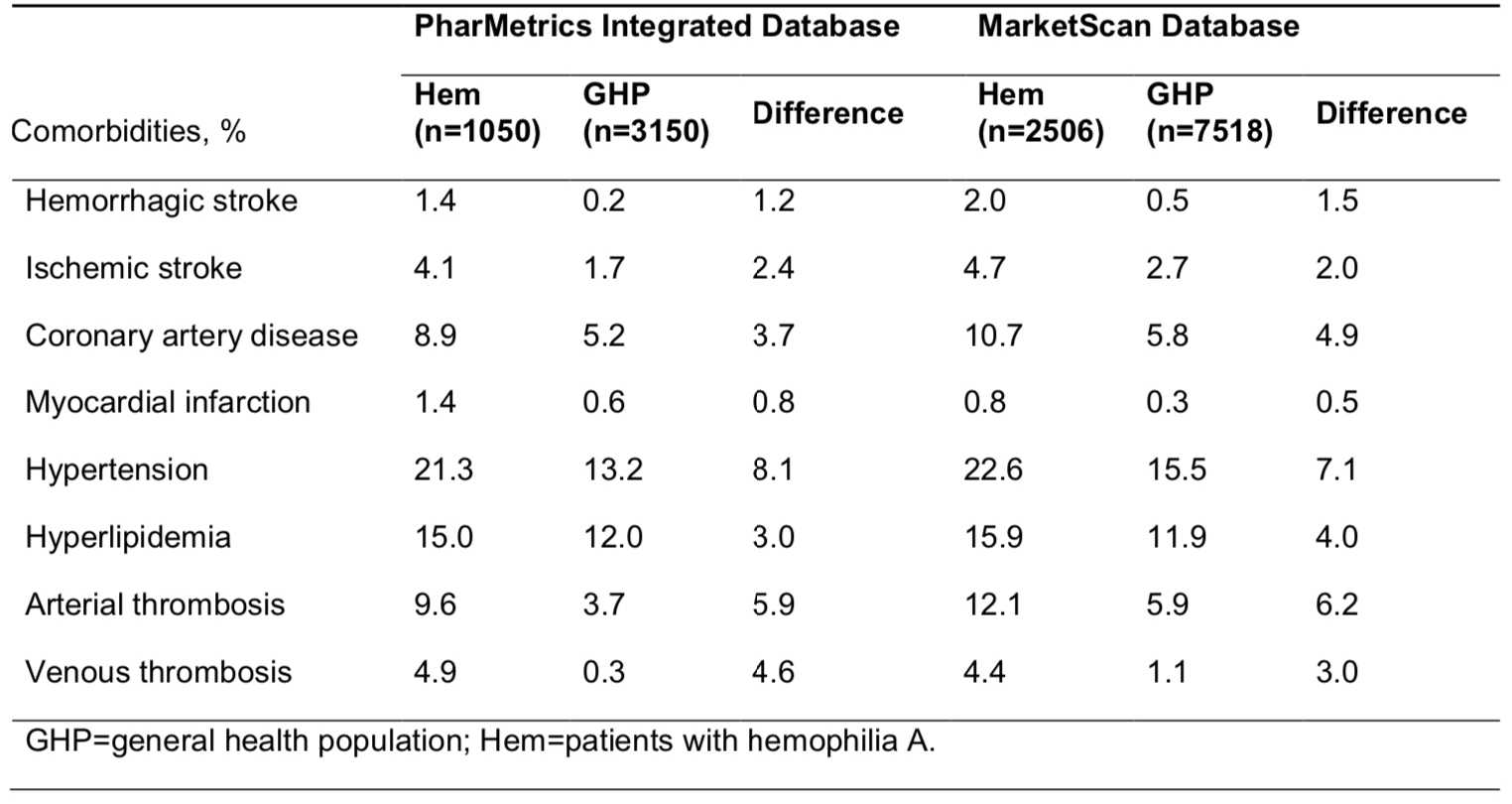Objective:
A previous retrospective study of the MarketScan® claims database reported increased prevalence and earlier onset of cardiovascular (CV) comorbidities in patients with hemophilia A compared with patients without hemophilia. Our study was designed to confirm these findings in a second population of male patients with hemophilia A in the United States.
Methods:
Male patients with hemophilia A and continuous insurance coverage were identified by ICD-9-CM code 286.0 using the PharMetrics LifeLink claims database (IMS Health) of patient records from January 1, 2008 to December 31, 2011. Patients with hemophilia A were matched 1:3 with controls for sex, age, plan type, geographic region, and eligibility months in the study period. The prevalence of CV comorbidities (identified by ICD-9- CM codes) was compared between matched cohorts. Statistical significance was calculated using Fisher’s exact test.
Summary:
Overall, 1050 patients were included in the hemophilia A cohort and 3150 in the control cohort (Table). Prevalence of hemorrhagic stroke, ischemic stroke, coronary artery disease, myocardial infarction, hypertension, hyperlipidemia, arterial thrombosis, and venous thrombosis was significantly higher in the hemophilia A cohort (all P≤0.016). Increased prevalence of CV comorbidities was consistent across most age groups, and patients with hemophilia A experienced CV comorbidities at an earlier age than those without hemophilia.
Table: Cardiovascular comorbidities in patients with hemophilia A

Conclusions:
This second retrospective study of claims databases confirmed an increased prevalence and earlier onset of CV comorbidities in patients with hemophilia A. These findings support increased screening in patients with hemophilia for CV comorbidities at an earlier age than recommended for the general population.

